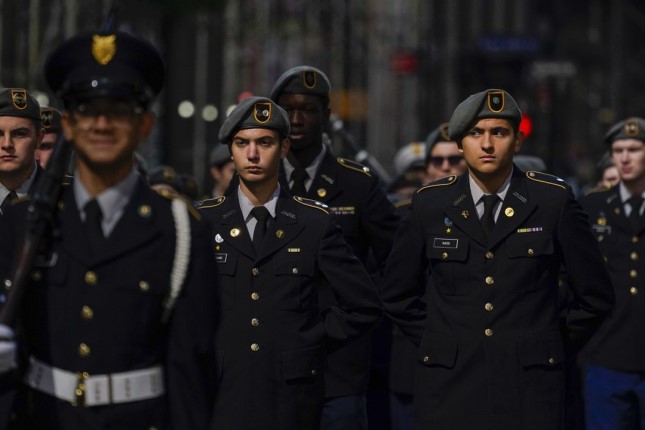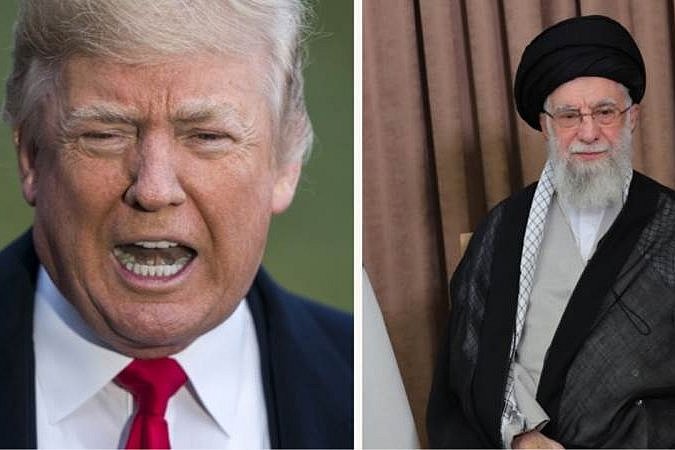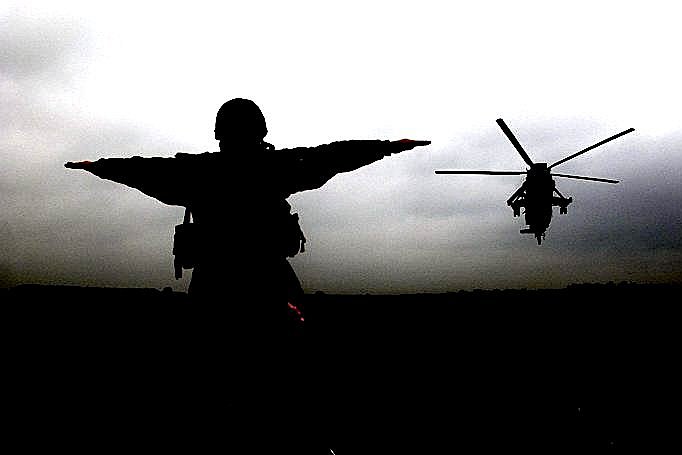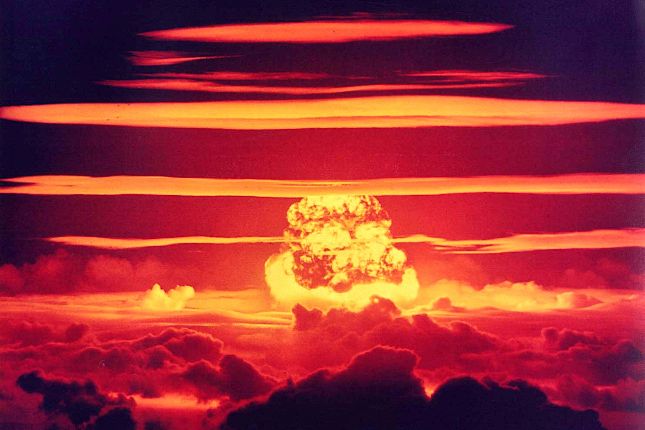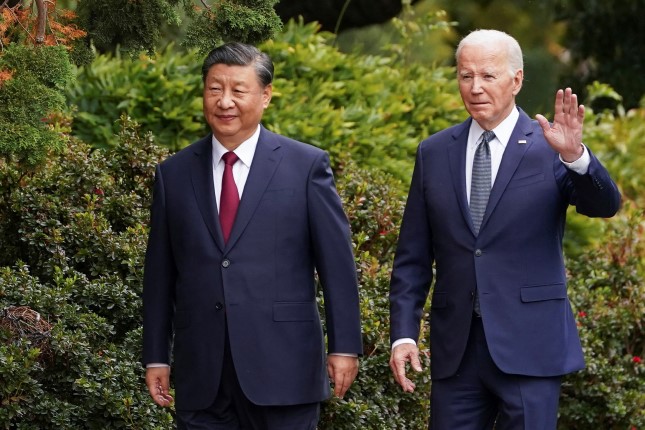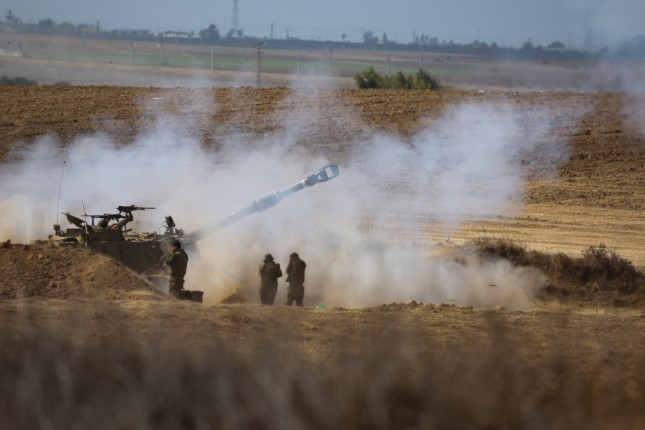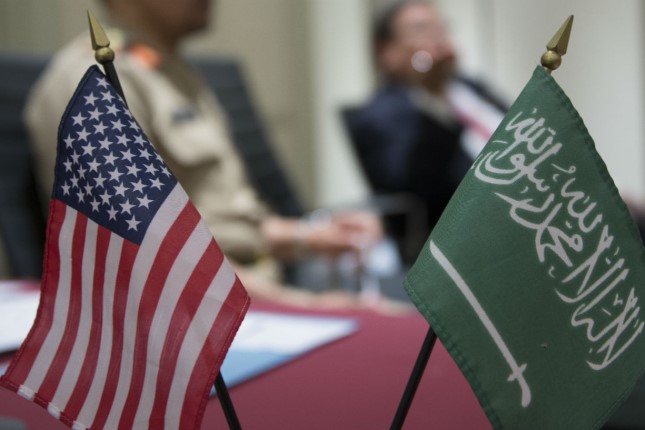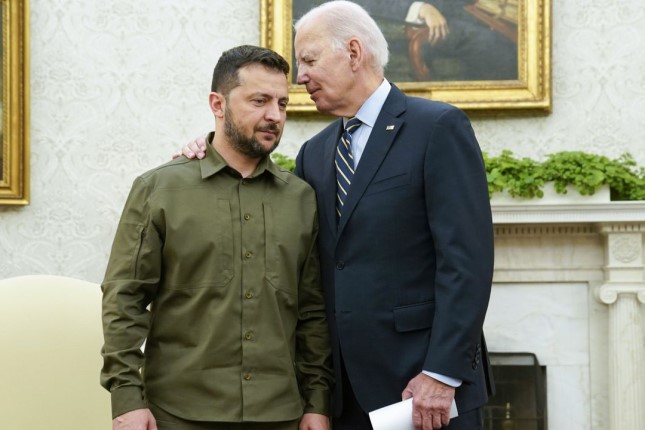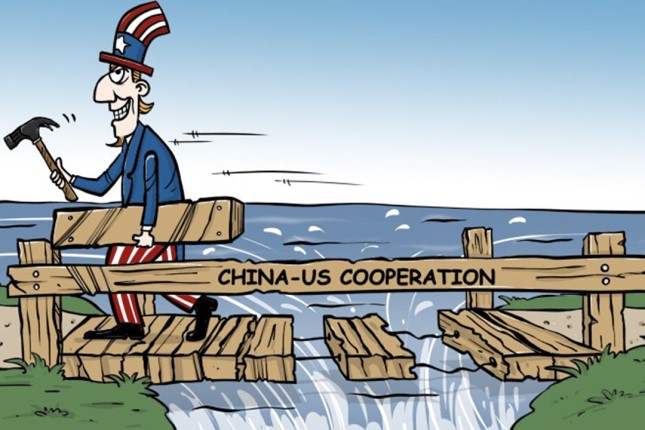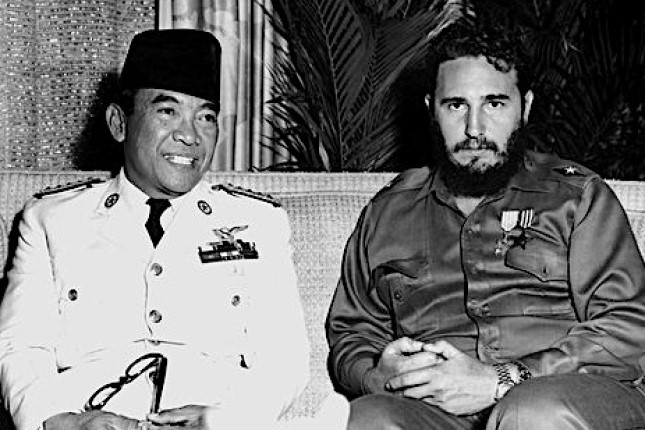This year, the US Army is expected to fall almost a quarter short of its annual 65,000 recruitment goal. According to an April 20 press release from the Department of Defense, the Navy is expected to be 6,000 enlistees short, and the Air Force 10,000 enlistees short of their 2023 goals.
This is not a fluke or one-time occurrence, but a mounting problem for the armed forces to which considerable attention is now being given and large sums of money allotted.
Last year, the Army tried to bring in 60,000 new recruits, but was only able to enlist 45,000 soldiers.
Thomas Spoehr, director of the Center for National Defense, described the crisis as “the worst since the institution of the all-volunteer force in 1973.” That is, the worst since widespread social unrest and mass protests against the Vietnam war and the draft forced an end to military conscription.
Spoehr added that the crisis “is not abating.”
Last month, a new book appeared, authored by Matthew Weiss and titled We Don’t Want YOU, Uncle Sam: Examining the Military Recruitment Crisis with Generation Z. The book, written by a younger, well-to-do Marine officer, examines how the military is “scrambling to get a grasp” on Gen Z. It offers a series of proposals to reform the military so as to better attract the younger generation.
Billions of dollars are now being spent by the military as it “scrambles” to get hold of new bodies for its operations. In 2018, the Army signed a $4 billion contract with the global marketing company Omnicon to produce a large-scale advertising campaign aimed at young people.
US Army Secretary Christine Wormuth describes the recruitment shortfalls as a “serious situation.” According to The Week, Wormuth “has begun drafting a sweeping overhaul of her branch's recruitment and outreach process.”
Numerous plans are being discussed in military circles to offset the manpower shortage. Alongside changes to domestic recruitment, these include plans to expand and deploy AI and autonomous fighting technology, the development of a “foreign legion” that could fight in return for US citizenship, and the implementation of new rules to force or entice veterans back into the military.
Causes
Numerous reasons have been given for the crisis. The “unfit” character of potential recruits and the need to “lower the bar” for admission are the most superficial among them.
Michael O’Hanlon, a fellow at the Brookings Institution, goes somewhat deeper, blaming the “bad news stories about sexual assault, accidents and other things.” He adds, “Losing a war in Afghanistan doesn’t help.” Others point to “culture wars” and “wokeness.”
Ultimately, the crisis reflects a changed and increasingly hostile attitude of young people to the military.
Just 9 percent of those aged 16-21 said they would even consider joining the military in 2022, down from 13 percent prior to the pandemic. Approval for the military amongst the US population as a whole is at its lowest point in over 25 years.
These statistics should also be considered in the context of earlier polls, which found that half of Gen Z and almost two-thirds of millennials supported socialism over capitalism. Likewise, they should be seen against the backdrop of the so-called “great resignation,” as millions of young Americans reject the abusive, low-paying jobs that form the bedrock of the economy.
In one of the more honest appraisals of the military recruitment crisis, the Wall Street Journal explained that “after the patriotic boost to recruiting that followed 9/11, the US military has endured 20 years of war in Iraq and Afghanistan with no decisive victories.”
The Journal continues, “[T]here have also been scandals over shoddy military housing and healthcare, poor pay for lower ranks that forces many military families to turn to food stamps, and rising rates of post-traumatic stress disorder and suicide.”
These comments begin to express what is happening. Put somewhat differently: Young workers do not wish to sacrifice their lives as fodder in a global operation of imperialist war and occupation.
Between 755,000 and 786,000 people, largely civilians, are thought to have died directly from military violence in Afghanistan, Iraq, Syria, Libya and Yemen since US-led conflicts began there. However, total estimates of deaths caused by American-led military conflicts over the last quarter-century begin far higher, at 3 million people. In fact, such estimates go as high as 12 million. These numbers are higher than those for people directly killed in combat, taking into account the catastrophic impact of medical, nutritional and infrastructural breakdown caused by US-led military operations.
Millions more people have been left destitute, jobless and homeless due to these wars. According to the UN, more than 110 million people were forcibly displaced as of May 2023, the most on record. Of these, 35.3 million had been displaced across national borders. The home countries of the three biggest refugee populations were Syria, Afghanistan and Ukraine, each of which has been devastated by conflicts resulting from the machinations of the United States military and intelligence agencies.
Meanwhile, those who are veterans of these wars have been left to deal with the crippling economic, psychological and physical effects of their “service” on their own. In 2018, veterans in the United States were 55 percent more likely to kill themselves than people in the broader population. Thirty eight percent of veterans have a diagnosed mental health disorder. Homeless veterans with significant mental health issues are to be found distraught and desperate on the streets of every major city in America.
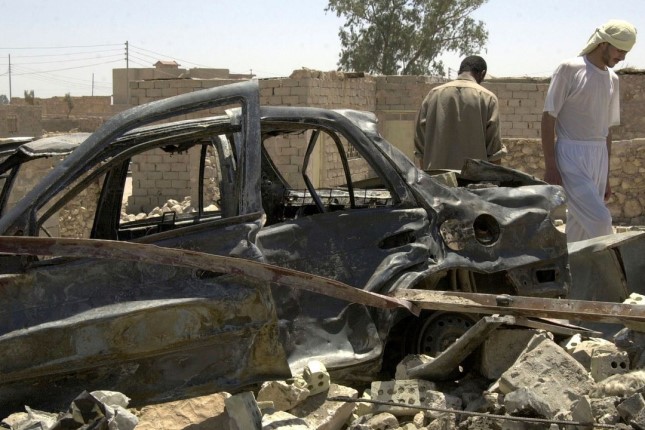
In this June 19, 2004, file photo, residents of a Fallujah, Iraq neighborhood walk through the wreckage of their homes which were destroyed in a U.S. airstrike. The U.S. launched its invasion of Iraq on March 20, 2003, unleashing a war that led to over 1 million deaths. Photo: AP Photo / Abdul-Kadr Saadi / File.
In short, over the last 20 years, the US military has been exposed as the deadly instrument of American imperialism by the destruction of whole societies in Iraq and Afghanistan, the death of millions of people, the squandering of trillions of dollars of resources, the total disregard for human life, including its own soldiers—all to benefit an elite class of wealthy and powerful families. Thanks in part to the courage and sacrifice of figures such as Julian Assange, these crimes are known.
This is why young people do not want to join the military.
Inflection point
The US military recruitment crisis takes place at a historic inflection point for US imperialism. Since the dissolution of the Soviet Union in 1991, the United States has pursued more than 30 years of unrelenting war. These wars—in the Balkans, Iraq, Afghanistan, Libya, Syria, Somalia and Ukraine—have been waged for the purpose of offsetting American capitalism’s economic decline and maintaining US global supremacy by means of military violence.
But the intractable and mounting problems of US capitalism, and with it, global capitalism, have not been solved by these wars. On the contrary, the abyss grows. Above all, the ruling class watches in horror as signs mount of a mass movement of the working class against low pay and exploitation.
In this context, the United States armed forces have sought to reshape their entire military, intelligence and political-cultural structure to prepare for war against China.
The Pentagon and the CIA see China’s economic rise as both an existential threat and an opportunity. For them, “The 21st century will be the American century,” in the words of President Biden, if, and only if, the competition can be forcibly swept away. Top generals in the US military now predict war with China as early as 2025.
The war in Ukraine is a stepping stone in this larger project. The American and European ruling classes salivate over the prospect of carving up Russia into mini-states. Its vast troves of resources, and massive, sprawling domestic and regional markets would be dominated by American and European capital. Moreover, the subjugation and dismemberment of Russia would remove a major obstacle to mounting a war against China.
Well over 200,000 people have now died in the Ukraine war, whose origins lie in NATO’s reckless expansion eastward and the 2014 Maidan coup, which ousted an elected pro-Russian government and replaced it with a far-right pro-NATO regime. Kiev’s long-touted “counteroffensive” has failed, and the Ukrainian government, facing the mass death of its soldiers, scours the country for recruits.
The Ukraine war has demonstrated two interconnected things to the American military leadership:
First: The death toll in Ukraine belies notions that future wars could be “bloodless” or have only limited casualties. A US war against China and Russia, i.e., a Third Word War, would require the enlisting of millions of people into the armed forces and convincing them to fight. According to US military documents leaked in April, the Ukraine war has already led to 354,000 casualties. But there is no end in sight to the conflict. Should a US-China war break out in Taiwan, a far more densely populated region than Ukraine, what kind of death toll would occur there? Moreover, what does this portend for outright conflict between the US and China? As a comprehensive military report from January 2023 on the opening days of a potential war against China states: The Navy and Air Force will need to reject the notion that the next war will be long distance and “push-button,” not requiring personnel to face personal danger or operate under conditions of extreme hardship. Although such notions have been attractive since the end of World War II, they do not describe a twenty-first century conflict between great powers… Commanders will need to continue operations and move forward despite a high level of casualties not seen in living memory.
Second: War planners are drawing from the Ukraine conflict the fact that the current industrial supply chain would not be able to keep pace with the demands of a direct war with major powers. The Ukrainian military has burned through tens of billions of dollars of American ammunition in just a little more than a year. An Associated Press report found that the Ukrainian military is firing 6,000 to 8,000 155m artillery shells every day. But the US can only produce 14,000 of these shells every month.
The US and European press have nervously fixated on this issue the last few months. CNN was told by NATO that the “dwindling supply of artillery ammunition” in Ukraine was a “wake-up call.” Jake Sullivan, Biden’s national security adviser, said, “We discovered that the ability to mass produce that ammunition [155m artillery shells] would take not days or weeks or months, but years, to get to the level that we need.”
Now the US and Europe are scrambling to invest more money into artillery and other armaments production, with the EU passing the “Act in Support of Ammunition Production” in July to subsidize new armament production to the tune of 500 million euros.
These two points underscore the problems facing the US ruling class and its military leadership. They also point to key vulnerabilities that highlight the convergence of the erupting class struggle with the fight against war.
If the military, not yet engaged in an all-out war with Russia or China, is already failing to fill its recruitment levels, what will happen when such a war begins?
In the second year of the Iraq War, sections of the American ruling class began to call for the return of the draft, which was ended as a result of the mass protests against the Vietnam War. During the Iraq war, the Bush administration instituted rules that prevented members of the military from retiring or resigning, forcing them to serve, in effect, as a partial draft. Today, the implementation of the draft would have explosive, if not revolutionary, implications in the United States.
In regard to the armament shortage, the US military and its European counterparts now seek to develop a national-industrial regime that can produce the quantity of armaments required to sustain an ongoing war between major powers. In addition to draining even more resources away from social programs, this would require the mobilization of a new assembly-line workforce. With major struggles already underway, however, by auto, logistics and other key sections of the American working class, the ruling class risks leaving such production lines in the hands of a combative, youthful working class, hostile to war.
The drive to war on campuses and in high schools
It is in the context of these twin problems of a recruitment and an industrial armament crisis that the aggressive moves of the United States military on college and high school campuses should be understood.
Earlier this year, it was revealed that thousands of high school students are being illegally forced into Junior Reserve Officer Training Corps (JROTC) programs across the country. In an Army recruiter handbook, distributed to over 10,000 recruiters, the Pentagon leadership instructs: “If you wait until they’re [high school] seniors, it’s probably too late.” An investigation by the ACLU found that students as young as 11 have been enlisted.
In Georgia, the National Guard is planning to use cell phone nets that collect, en-masse, information on high school students. They will then use this data for aggressive recruitment.
Similar things are afoot in relation to the CIA and other intelligence agencies, which, facing their own recruitment difficulties, are turning to the campuses as a major recruitment base. A recent WSWS exposure of Texas A&M’s ties to the intelligence agencies is just one demonstration of this connection.
There are a staggering 3,725 JROTC programs at almost 2,000 different high schools across the country. The program is funded annually with about half a billion dollars.
In higher education, there are more than 1,700 colleges and universities that have ROTC programs. According to a 2016 report from the US Army, $431 million in awards and scholarships are being used each year to entice young people into the Army’s ROTC program, reaching some 23,700 cadets.
Meanwhile, major arms manufacturers are aggressively integrating themselves into the workings of college and university campuses across the country. A report last year from In These Times found that Lockheed Martin had close ties with over 50 universities across the United States. This included partnership universities, universities receiving major research grants from the company, those hosting sponsored Lockheed Martin professors, and those hosting “Lockheed Martin Day” recruitment events.
The National Security Innovation Network (NSIN), a Department of Defense-sponsored organization, operates at dozens of major universities across the country. The organization states that it is “dedicated to the work of bringing together defense, academic and entrepreneurial innovators to solve national security problems in [a] new way.”
Billions of dollars are now being funneled from the military budget into the universities to fund research oriented towards the preparation for war against China through programs like the NSIN and the CHIPS and Science Act of 2022.
Meanwhile, there are ongoing efforts to whip up anti-Chinese hysteria on the campuses, including campaigns to demonize Chinese students and ban Chinese graduate students in certain fields. Similar moves are being made among the allies of the US. For example, in Australia, Chinese academics are being put under surveillance as part of an anti-China witch hunt.
Photo: Members of the Xavier High School Army JROTC march up 5th Avenue during the annual Columbus Day Parade, Monday, October 10, 2022, in New York © AP Photo / Mary Altaffer.
Source: World Socialist Web Site.
